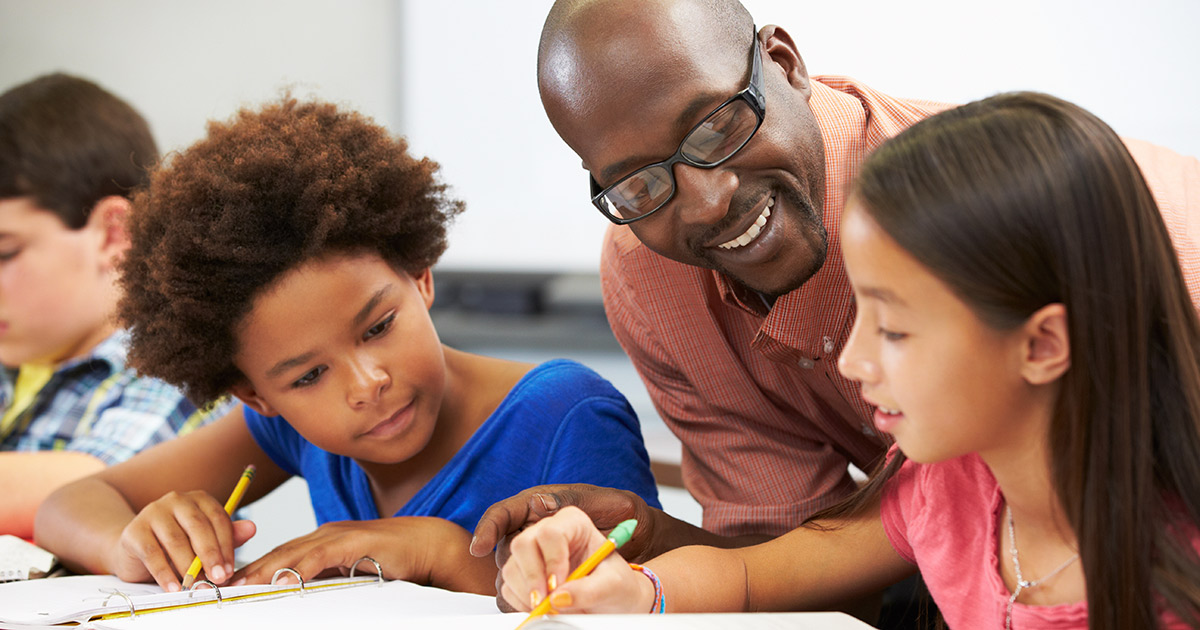
Equity and equality are two different concepts that are often used interchangeably. Many people think that equity in education means everyone getting the same thing, but it actually means that everyone gets access to what they need. So how can we work to truly narrow the gaps and improve student learning? Let’s take a closer look.
Equality versus equity
To understand what equity means in schools, we must first separate it from equality. “We have heard the terms equality and equity used interchangeably. However, it is critical to note that while both concepts are key to social justice and deal with resources, they are significantly different,” states The National Association for Multicultural Education. “Generally, equality is associated with treating people the same or people having equal access to resources and opportunities.”
Equity, on the other hand, is about ensuring that everyone receives what they need to be successful — even if that varies across racial or socioeconomic lines. In short, equality is not enough to combat hundreds of years of oppression, poverty, and disproportionality. “While the world in which we live distributes talent equally, it does not equally distribute opportunity,” explains Equity Education.
Culturally responsive teaching
Culturally responsive education focuses on elevating the learning capacity of students who have traditionally been marginalized in education. According to Zaretta Hammond, author of Culturally Responsive Teaching and The Brain, academic struggles are often attributed to a “culture of poverty” or “different community values toward education” but they really exist because “we don’t offer [students] sufficient opportunities in the classroom to develop the cognitive skills and habits of mind that would prepare them to take on more advanced academic tasks.”
The idea of culturally responsive teaching (CRT) is that we work toward equity by ensuring that marginalized students receive opportunities for high-level thinking and grow into deep thinkers. “When you’re engaged in complex thinking, your brain grows,” says Hammond. “Too many classrooms have students passively sitting. The teacher is doing the majority of the work.” Hammond sees CRT as a driver toward “helping students have environments in which they can grow their brain power and be active participants in their own learning” and where “they see that they are more than capable because competence precedes confidence.
Differentiated instruction
Differentiation is not a sorting method, nor does it mean scaffolding assignments to death. Differentiation is a pathway toward equity because it tasks teachers with truly understanding the needs — the evolving needs — of their students and providing modalities for learning and challenges that fit those needs. “Connecting this way requires teachers to differentiate instruction — recognizing their students’ individuality and then planning learning experiences with the range of student needs, interests, styles, and preferences in mind,” says Stuart Udell, CEO of Catapult Learning.
In a differentiated classroom, students are known and understood, receiving exactly what they need to be successful. “At its most basic level, differentiating instruction means ‘shaking up’ what goes on in the classroom so that students have multiple options for taking in information, making sense of ideas, and expressing what they learn,” says Carol Ann Tomlinson, in her book How to Differentiate Instruction in Academically Diverse Classrooms. “In other words, a differentiated classroom provides different avenues to acquiring content, to processing or making sense of ideas, and to developing products so that each student can learn effectively.”
Allocation of resources
When it comes to the allocation of school resources, equity and equality are very different. “Should per-student funding at every school be exactly the same? That’s a question of equality. But should students who come from less get more in order to ensure that they can catch up? That’s a question of equity,” says Blair Mann of the Education Trust. “The students who are furthest behind — most often low-income students and students of color — require more of those resources to catch up, succeed, and, eventually, close the achievement gap. Giving students who come to school lagging academically (because of factors outside of a school’s control) the exact same resources as students in higher income schools alone will not close the achievement gap. But making sure that low-income students and students of color have access to exceptional teachers and that their schools have the funding to provide them with the kind of high-quality education they need to succeed will continue us on the path toward narrowing that gap.” Ensuring that students who need more to achieve success receive those resources and opportunities illustrates equity in action.
Using data to inform instruction
The word data is an educational mainstay, but it’s more than just tracking test scores and evaluating teacher performance. Data can be used as an equity tool. “Bringing data to conversations about equity, policy, and practice is important because people often have perceptions that do not match what is actually happening in a school community,” says David Stevens and Theresa Deussen of Education Northwest. “For example, administrators may think of discipline disparities as an issue that mainly affects boys, not realizing until they examine the data that African-American girls are often disciplined more often than white or Asian boys and far more often than girls of any other racial background…. Rather than using data to create a laundry list of “what’s going wrong with our schools” or to assign blame to a group or individual, it is more effective to look at equity-related data with the goal of building capacity for improvement.”
Jennifer L.M. Gunn spent 10 years in newspaper and magazine publishing before moving to public education. She is a curriculum designer, a teaching coach, and high school educator in New York City. She is also co-founder of the annual EDxEDNYC Education Conference for teacher-led innovation and regularly presents at conferences on the topics of adolescent literacy, leadership, and education innovation.
Categorized as: Tips for Teachers and Classroom Resources
Tagged as: Diversity
